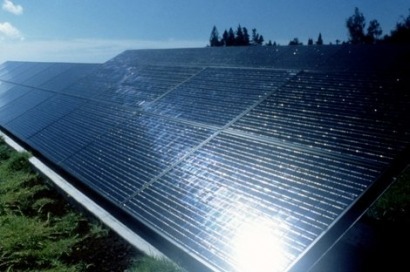
The new cell incorporates proprietary advances in laser-processing technology in its development and it sets the stage for a marriage between Natcore’s highly specialised laser processing and its black silicon technology. The benefits of such a combination would include efficiency gains and significantly reduced production costs.
Unlike previous attempts to produce such a cell, Natcore’s approach is suited to large-scale manufacturing, particularly of high-performance all-back contact cells. The milestone achievement was accomplished at the company’s R&D centre in Rochester, NY, and is one of the first ever demonstrations of a low-temperature, laser-processed solar cell.
At present, silicon processing techniques require temperatures of 850° C (1,562° F) or higher. However, the Natcore process does not entail temperatures above 350° C for any step. 350° C is a common annealing temperature used in industry, while exposure to 850° C and above, the temperature typically used for conventional solar cells, requires specialised equipment. Processing at the higher temperature is conducted in a diffusion furnace, the interior of which needs to be fabricated from quartz or other very high-temperature compatible materials like silicon carbide. Natcore’s process eliminates that diffusion furnace altogether.
According to an independent study, the company’s black silicon process should save 23.5 percent in manufacturing costs by eliminating one furnace from the production process. Combining this process with the highly specialised laser processing will eliminate a second furnace from the process thus achieving another cost reduction.
Eliminating exposures to elevated temperatures also preserves the ‘minority carrier lifetime’ of a cell. This means that efficiencies comparable to the efficiencies of cells made with more expensive computer-chip-grade silicon can be achieved with lower-quality and lower-cost solar grade silicon thereby reducing the costs of fabrication.
Natcore’s scientists claim that, as the process is refined, a laser-processed cell will significantly increase the power output of solar cells while continually reducing manufacturing costs.
“Applying a black silicon etch is a very inexpensive antireflective process” said Chuck Provini, Natcore’s president and CEO. “Laser processing is also relatively low-cost, because it reduces energy and chemical costs associated with the furnace that it replaces. By combining two low-cost, low-temperature processes, Natcore is effecting a paradigm change as to how solar cells are made. We believe that our proprietary technology will be in great demand, and we will move to license it to the right partner as soon as possible.”
The next steps in the development process will be to add the company’s black silicon antireflection control technology to the front of the cell and to move the front contacts to the back of the cell to produce what is called an interdigitated contact pattern. The elimination of the front contacts will allow 3 percent to 4 percent more light to enter the cell, thereby increasing its output.
For additional information:

